- About MAA
- Membership
- MAA Publications
- Periodicals
- Blogs
- MAA Book Series
- MAA Press (an imprint of the AMS)
- MAA Notes
- MAA Reviews
- Mathematical Communication
- Information for Libraries
- Author Resources
- Advertise with MAA
- Meetings
- Competitions
- Programs
- Communities
- MAA Sections
- SIGMAA
- MAA Connect
- Students
- MAA Awards
- Awards Booklets
- Writing Awards
- Teaching Awards
- Service Awards
- Research Awards
- Lecture Awards
- Putnam Competition Individual and Team Winners
- D. E. Shaw Group AMC 8 Awards & Certificates
- Maryam Mirzakhani AMC 10 A Awards & Certificates
- Two Sigma AMC 10 B Awards & Certificates
- Jane Street AMC 12 A Awards & Certificates
- Akamai AMC 12 B Awards & Certificates
- High School Teachers
- News
You are here
Billingsley's Sources for the First English Euclid's Elements: Two Annotated Mathematical Treasures
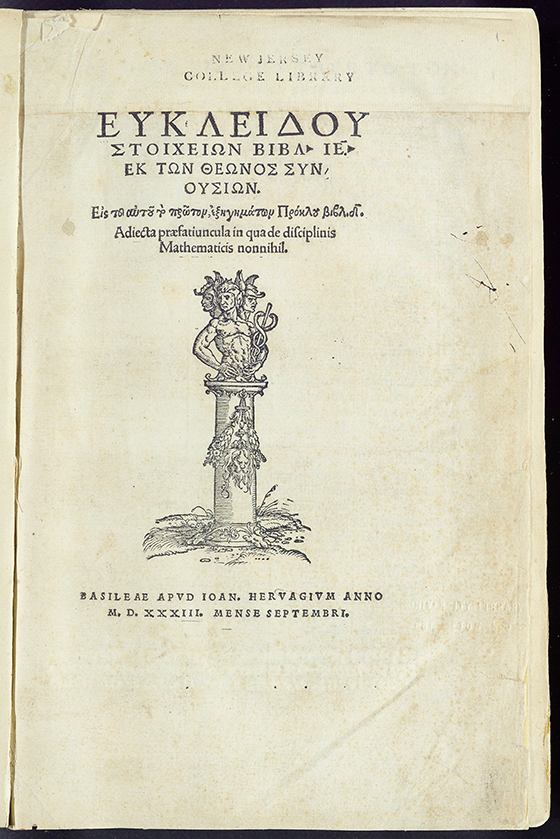
A rare book find in the Princeton University Library was the original Greek language edition of Euclid’s Elements, Euykleidou Stoicheiōn … (1533), from which Henry Billingsley (d. 1606) made his English language translation. This translation was published in 1570 as The elements of geometrie of the most ancient philosopher Euclide of Megara, and came to be known simply as the "Billingsley Euclid." The title page of Euykleidou Stoicheiōn … is shown above. Later pages of this book, shown below, were heavily annotated by Billingsley himself. The book's historical significance was recognized and noted by George Halsted, then a tutor at Princeton University, who wrote of his findings in The American Journal of Mathematics in 1879 (vol. 2, pp. 46-48). Halsted’s note (below) and pages from the Greek text (above and below) are presented here courtesy of the Princeton University Library Digital Collection, where the complete work can be examined.



Billingsley made no notes on the first page of text in Euykleidou Stoicheiōn … (Euclid's Elements, below):

On the two pages below, Billingsley's marginal notes appear in a miniscule Greek script (with a bit of Latin on the second page):
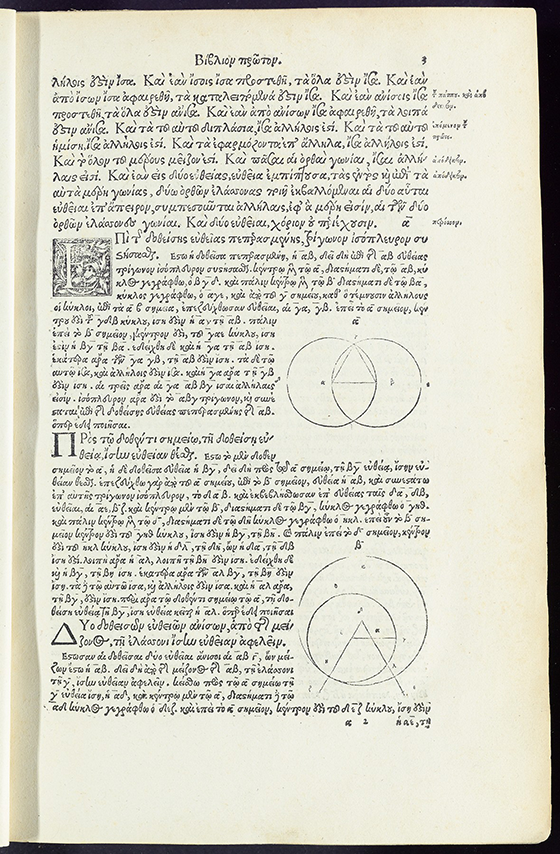
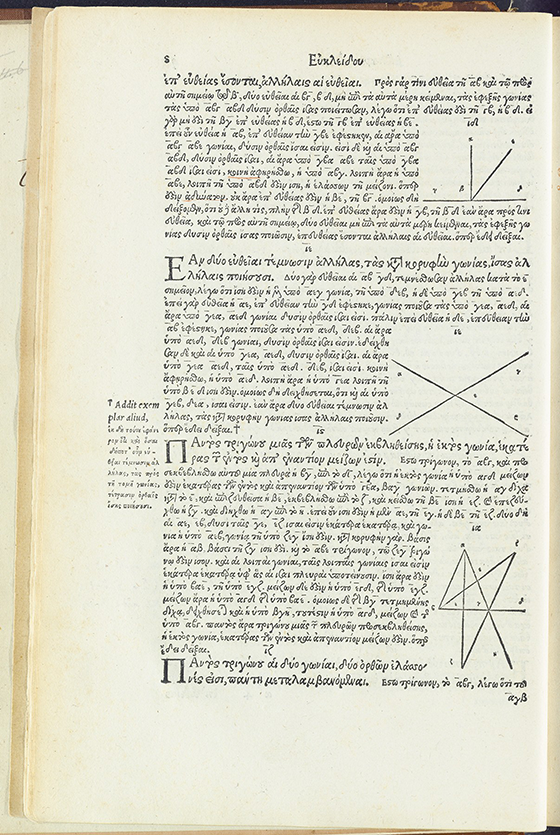
Another reference Henry Billingsley consulted and annotated in his efforts to produce an English language edition of Euclid’s Elements is Euclidis Megarensis mathematici clarissimi elementorum geometricorum libri XV … (1558). The excerpted images shown below are from his personal copy of this work, attested to by his signature on the title page. These images are obtained through the courtesy of the Princeton University Library Digital Collection, where the complete work can be viewed:

This book is really a collection of Latin commentaries and translations of Euclid’s Elements. The commentators/translators are:
- Campanus of Novara (ca.1220-1296), the first known translator of Euclid's Elements into Latin;
- Bartolomeo Zamberti, Italian humanist who published his own Latin translation of the Elements from the Greek in 1505, and
- Theon of Alexandria (ca.335-405).
The highly respected scholar Philipp Melanchthon contributed a Preface to Euclidis Megarensis mathematici clarissimi elementorum geometricorum libri XV …:

Compare the opening pages of Campanus and Zamberti:


Another page of basic definitions from Zamberti’s edition:
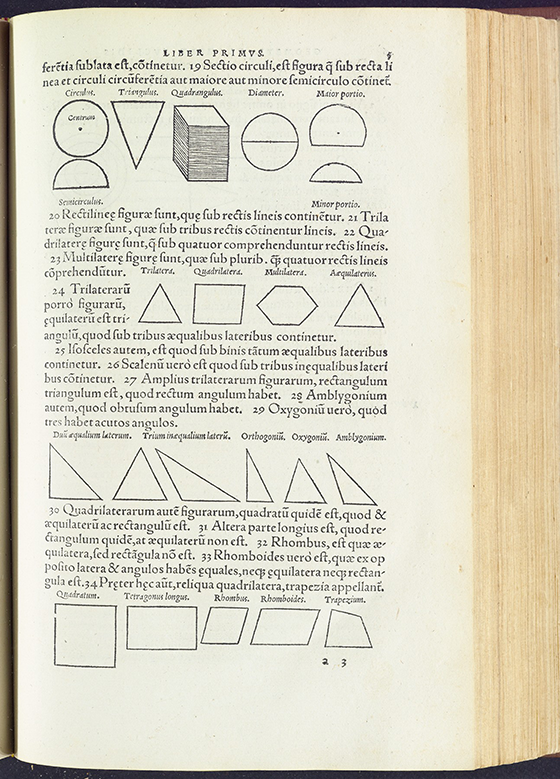
Compare the first pages of propositions of Campanus and Zamberti:
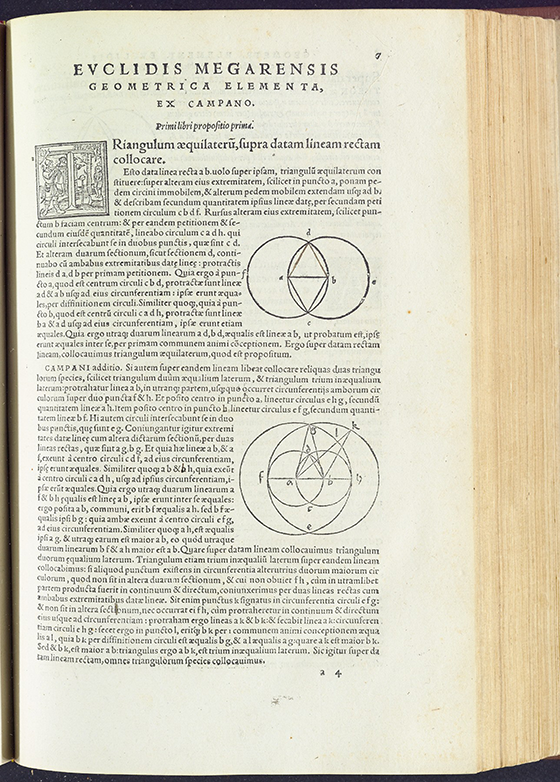
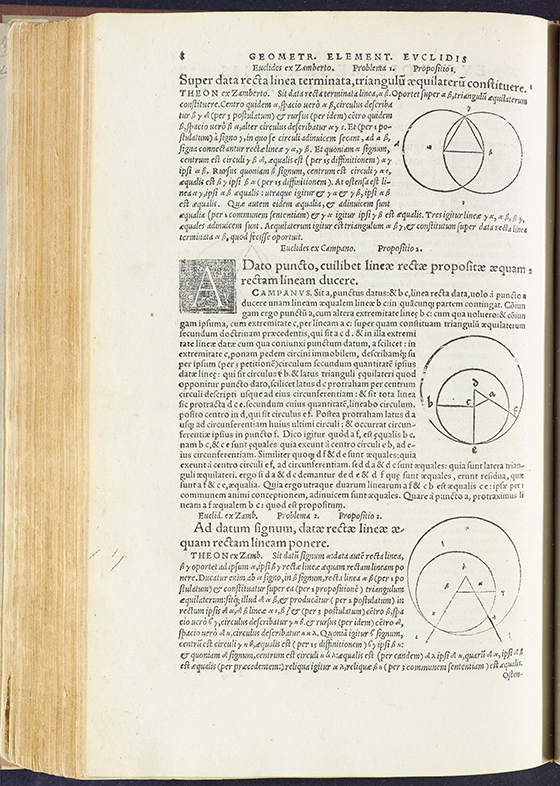
Excerpts from Zamberti, annotated and corrected by Billingsley:


Billingsley’s corrections of Campanus’s edition:

The images above are supplied through the courtesy of the Princeton University Library Digital Collection.
For images from the result of Billingsley's labors, The elements of geometrie of the most ancient philosopher Euclide of Megara (1570), see Mathematical Treasures - Billingsley Euclid here in Convergence.
Frank J. Swetz (Pennsylvania State University), "Billingsley's Sources for the First English Euclid's Elements: Two Annotated Mathematical Treasures," Convergence (August 2018), DOI:10.4169/Convergence20180809




